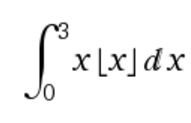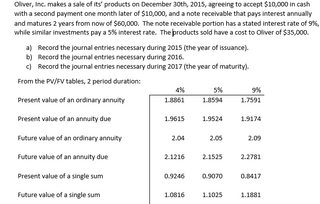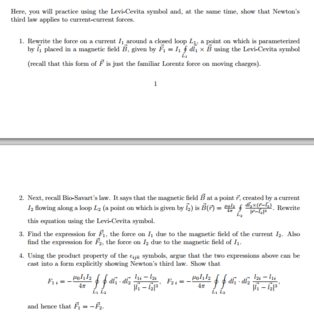Thread replies: 327
Thread images: 41
Thread images: 41
Anonymous
/sqt/ Stupid Questions Thread 2015-11-12 13:59:09 Post No. 7654887
[Report] Image search: [Google]
/sqt/ Stupid Questions Thread 2015-11-12 13:59:09 Post No. 7654887
[Report] Image search: [Google]
File: 1444884256832.jpg (2MB, 2560x3840px) Image search:
[Google]

2MB, 2560x3840px
How do I determine if an intersection between two geometric objects exist?
>>
>>7654887
What on this green earth is happening in your pic?
are they convex? Then use separating axis theorem. If you are trying to make your own collision detection system, just use bullet.
>>
>>7654894
for all shapes
I'm looking for a general solution
>>
>>7654910
You can't detect collision for real, any-shape because you can't represent it in computer memory. You need to simplify it first.
Do you want shape based on triangles or voxels or mathematical perfect primitive shapes like spheres or cylinders? 2D or 3D or higher dimensions?
>>
>>7654926
I'm not doing any collision detecting algorithms, I'm only interested in the math
>>
>>7654936
Then.
Let's say we have two shapes A and B. If there is a point that is a part of shape A and shape B then these shapes intersect.
>>
>>7654948
Yeah, but how would you prove that with any given equations/conditions for each shape?
>>
>>7654957
you need to look for points in whatever space the shapes are that both solve the shapes equations
if you don't have the equations then you don't know what the shapes are
>>
>>7654957
That's easy, you just put their equations together and look for points that are true for both.
eg intersection of x^2 parabole(A) and line y=1(B)
[math]
A = \{ (x,y): y=x^2 \}
[/math]
[math]
B = \{ (x,y): y=1 \}
[/math]
[math]
\left\{\begin{matrix}
y=1
\\ \ y=x^2
\end{matrix}\right.
[/math]
[math]
1= x^2
[/math]
[math]
x = \pm 1
[/math]
[math]
y = 1
[/math]
So [math](-1,1)[/math] and [math](1,1)[/math] are points of intersection, therefore shapes intersects.
>>
>>7654990
What about inequalities?
>>
>>7654998
You still have to do the same, look for points that solve both inequalities. If you have one inequality and one equality you can be able to solve it the same way.
Also you can always help yourself by looking for potential points of intersection on graph, and treat these inequalities as equalities to find points. eg. if you have two disks on a plane, you can treat them as circles and one of the created areas will be area of intersection.
>>
>>7655017
The point is to not use any arbitrary points. How could one even know if the intersection exists or not?
>>
>>7655037
Range and domain
>>
>>7655037
Define arbitrary point.
>>
>>7655064
nfrared
does it go through walls?
>>
>>7654887
I'm going for a maths PhD in the UK, what should I know?
>>
>>7654887
General method (one approach):
1) Describe both objects algebraically and consistently in terms of some coordinate system: cartesian, polar, spherical, R^3, CAD software, etc. Higher-tier coordinate systems for higher math/dimensions.
1a) Note that the above may result in multiple expressions, even if your problem only entails "two" geometric objects. For example, a regular dodecahedron in R^3 (being only the planes of its faces, excluding its interior) could be described as a union of piecewise plane segments.
2) Take the algebraic expression (or expressions) describing the one object (typically equations), and compare with the expression(s) describing the other object. Find all the coordinates in your coordinate system satisfying both families of expressions. Take care to account for all possible cases in whatever you've set up. Show that there can't be any other intersection points apart from the ones you've given, and then you're done.
3) An example: In R^2, the unit circle centered at the origin is given by x^2 + y^2 = 1 , while the line y = x cuts through this at a nice "45-degree" angle when graphed in the usual way. Note that the circle could be broken down into piecewise functions, but we pass over this. What it means for the line and the circle to have intersection points, is that the same coordinate(s) simultaneously satisfy the above two equations. In other words, we can assume the one condition in the other, thus
[math] \displaystyle 2x^2 = 1 \rightarrow x = y = \pm \frac{1}{ \sqrt{2} } = \pm \frac{ \sqrt{2} }{2} \rightarrow (x,y) = \bigg( \pm \frac{ \sqrt{2} }{2} , \pm \frac{ \sqrt{2} }{2} \bigg) [/math]
For extra rigor, add in some stuff about how a line and a circle cannot coincide at more than two points / a quadratic cannot have more than two roots, as needed.
>>
>>7655114
so how do you deal with discontinuous or non-differentiable cases? You know the sorts of stuff that occurs in CAD systems.
>>
>>7655124
oh lawdz I dunno, I've never used a CAD.
How about verbally describing your problem(s)? You seem to be doing something "applied", but your big calculator can still goof/punt, which is why you need math, as you're sensing.
This guy's latter sentence >>7654994 is true, although perhaps "expressions" is a better word (inequalities, etc).
>>
>>7655066
>nfrared
>does it go through walls?
Like anything else, that depends on what the wall is made of.
>>
>>7655108
https://www.youtube.com/watch?v=6oC5WnNL1fk
>>
If the planet mercury shrunk as time went on, would it have more or less density now compared to the density of the original?
>>
Is globoheat meme real
Pls anser here http://www.strawpoll.me/5989392/
No b rude k :3
>>
>>7654887
Ok, it's super simple but I don't have the method :
Using Fermat's little theorem, prove that :
[math]4^{20} \equiv 1[41][/math]
I have a lot more to do after this question, I just need to start...
>>
File: waveform-quant.png (29KB, 585x335px) Image search:
[Google]
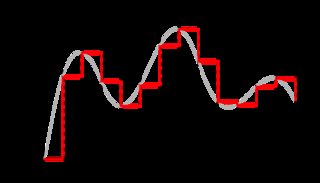
29KB, 585x335px
how do i go from quantized data (red) to the original signal (grey)? how do i get a function for the curve between t[n] and t[n + 1]? and can i still do it if the data isn't evenly spaced?
an anon in >>>/g/dpt told me to use
>https://en.wikipedia.org/wiki/Fourier_inversion_theorem
but how do i get the fourier transform for the red data?
>>
>>7655880
4^20 = 2^40 = 1 mod 41 since 41 doesn't divide 2.
>>
How do I demonstrate pic related? Or where can I find step by step demonstration of Fourier's sen and cos integrals from 0 to Pi/2
>>
>>7655934
What is t here ?
>>
>>7655937
Time.
>>
>>7655945
But this is wrong in general. You're integrating a nonnegative continuous unction and getting zero so whatever you are integrating is zero on the interval
>>
>>7655890
>https://www.youtube.com/watch?v=FLPqshreE-g
>getting X(t) out of X(n) is the equivalent of getting X(Ω) from Xs(Ω)
holy shit is this tedious. he didn't even explain what X(Ω) and Xs(Ω) is, i don't think. and no i didn't just watch youtube videos, i read some stuff from some university but it just went through extremely simple stuff without explaining the fourier transform or anything (it just assumed that you already knew about the fourier transform).
for fuck's sake
>>
is there some program where I can generate waveforms and add them together, and play them as a sound?
or take a waveform, take it apart, and listen to the resultant waveforms?
>>
>>
So line integrals of a function of two variables (so a surface) over a curve C returns the area above C and below curve etched into the surface (f(x,y) evaluated only on points on C). Why then Do line integrals of vector fields return volume over a curve returns volume?
>>
File: imagehjhs.jpg (17KB, 479x307px) Image search:
[Google]

17KB, 479x307px
Do you have pic related full size?
>>
>>7655890
i don't want to modify or analyze the signal... i just want to reconstruct the signal!!! so taking the fourier transform and then the inverse fourier transform will accomplish nothing?!?!
then how the fuck am i supposed to reconstruct the original signal?
>>
>https://en.wikipedia.org/wiki/Signal_reconstruction
this doesn't say jack shit!
>>
>http://math.nyu.edu/faculty/greengar/glee_nufft_sirev.pdf
this is some fucking bullshit
at least this is closer to what i want
but they're fucking horrible at "explaining" the formulas, they don't even say what the variables are
>>
>https://en.wikipedia.org/wiki/Unevenly_spaced_time_series
>Ideally, unevenly spaced time series are analyzed in their unaltered form. However, most of the basic theory for time series analysis was developed at a time when limitations in computing resources favored an analysis of equally spaced data, since in this case efficient linear algebra routines can be used and many problems have an explicit solution. As a result, fewer methods currently exist specifically for analyzing unevenly spaced time series data.[5][6][7][8][9][10]
so now that our computers are less crappy, people are too stupid and lazy to come up with proper solutions for this problem! now it's some fucking rocket surgery and academic wankery!
>The nonequispaced Fourier transform arises in a variety of application areas, from medical
imaging to radio astronomy to the numerical solution of partial differential equations.
>>
>>
File: Untitled.png (506KB, 494x558px) Image search:
[Google]

506KB, 494x558px
What did I do wrong? The answer is suppose to be all positive.
>>
File: Untitled.png (5KB, 257x90px) Image search:
[Google]
5KB, 257x90px
>>7656583
>>
>>7656583
Lemme get this straight, you're trying to get the Laplace of f(t)?
>>
>>7656587
I'm doing laplace.
>>
>>7656586
Well the way I'd do this is by rewriting it with the unit step function, but if you're supposed to use the definition of the Laplace I can't help you because I'm shit at integrating.
So I'd rewrite f as [eqn] sin(t) + u(t- \pi )*[0-sin(t)] [/eqn] Then when you take the Laplace, sin(t) becomes [eqn] \frac{1}{s^2+1} [/eqn] and the unit step function is taken into account with an exponential [math] e^{- \pi s} [/math] so it looks like your answer was correct.
>>
File: Untitled.png (2KB, 153x81px) Image search:
[Google]

2KB, 153x81px
>>7656594
Yeah, I'm suppose to use the definition. The back of the book says pic related.
>>
>>7656598
The back of the book is a lying shit
>>
>>7656601
I hope so.
>>
I have an algorithm on two structures A,B, its running time is in [math]\mathcal{O}(|A|*|B|)[/math]
Is it correct to say that the algorithm has quadratic runtime?
>>
>>7656754
No. Is there any relationship between structures A and B?
>>7655890
I would take the discrete fourier transform of it, and then just feed the components into a inverse fourier transform (not discrete). However, I dont think that's exactly what you mean? Do you want to get a higher sample rate from low rate signals?
>>
>>7656785
>Is there any relationship between structures A and B?
They are both graphs but their size is independent
>>
>>7655238
if shrunken without loosing mass, the density goes up.
if he looses volume and mass at the same rate the density would stay the same
>>
File: photo-shingo-matsuba-3.jpg (247KB, 1024x683px) Image search:
[Google]

247KB, 1024x683px
>>7654887
Can I soak stainless steel in vinegar to remove scratches?
>>
>>7656821
lose*
They aren't homophones. You don't "loos" something, you "looz" it. You never "loost", you "lahst". The knot isn't "looz", it's "loose".
They're very subtle pronunciation differences. I think if your and you're, there, their, and they're were taught as being subtly different, we wouldn't have all these problems. Instead the first damn thing they tell kids are "they're homophones!" And they hear and say them all the same, or randomly, from that point onwards.
>>
>>7656824
sandpaper
>>
>>7656825
or im just not a nativ english speaker/writer
>>
>>7654887
Really stupid question here, how do you call a student that's been studying math for three years ? A "third-year mathematic major" ?
Also, what is he going through ? A "third year of mathematic studies" ?
For some reasons Google won't give me the answer
>>
>>7656890
A maths student in his Xth year/semester
>>
>>7656842
That's alright, I'm not meaning to be a prick about it.
>>
>>7656903
Alright, thanks!
>>
If you reject the axiom of infinity does that mean theres a largest number?
>>
>>7656942
If you reject gravity, does that means we all float freely?
>>
>>7656953
I tried this and it didn't work.
Did I just not try hard enough, or the right way?
>>
>>7656956
Try dissing gravity with a sick yo mama joke. It worked for me, but Ive heard other people have been having issues with it. Just keep trying, anon. :)
>>
>>7656958
Okay, will do. I'm thinking up a good one as we speak.
>>
File: Untitled.png (7KB, 444x134px) Image search:
[Google]
7KB, 444x134px
How do I solve using l'hopital's?
>>
How likely is heat death?
>>
>>7657219
~100%
>>
>>7657226
we are the .000000...1%
>>
>>7657226
How likely is there anything after it?
>>
>>7657230
~100%
>>
>>7657228
We're the .000000...1% for the universe happening in the first place. The final state of the universe is a different story and heat death is based on a seemingly concrete view of thermodynamics.
Grant you heat death relies on things like the universe ultimately being a closed system, gravity to not play any major role, and for our understanding of thermodynamics to never change but with those in mind it's a much more likely outcome than the big crunch, multiverses, or any other opposing theories.
The big question becomes if anything can occur once heat death happens. Small instances of reversed entropy are one thing but any significant changes (shit like the spontaneous brain and stuff) to that system are completely unknown. With infinite time behind it you'd assume something would happen but that's not actually a given.
>>
>>7656785
what i want to do is to find values that correspond to the original signal in between samples.
like in the pic if the latest values (in red) are say a(t[n-2])=0.5, a(t[n-1])=0.55 and a(t[n]) = 0.4, i want to be able to find values on the grey curve in between samples such as a(t[n-0.5])=~0.5
the samples are unevenly spaced but i would greatly appreciate a solution for evenly spaced samples to start with, so that i have more of an idea of what i'm dealing with with the fourier transform stuff.
>>
>>7654887
anybody knows if there's a virus database? or good resources about virus/virology?
>>
Mexican descent who's 27 years old and applied to transfer to CSU school. How do I get scholarships? I heard of EOPS, but I don't have two recommendations.
>>
>>7657773
http://vxheaven.org/
>>
>>7657800
thanks bb
>>
>>7657782
Write letters.
Also >not transferring to a UC
pleb
>>
>>7657803
oh, I meant the other kind of viruses, but that's also interesting, thanks anyway
>>
>>7657808
kek i should have realized when you said virology that you didn't mean computer viruses
>>
>that pic
The fuck am I looking at?
>>
Why am I stuck on this simple as fuck question. I never took probability in college
Suppose we draw 2 cards from a deck from a deck of playing cards, what is the probability of drawing 2 spades?
I'm stuck I want to say 1/16 because the probability of 1 spade is 1/4 so .25*.25 = 1/16
OR
1/4 * 12/51 = 1/17
>>
>>7657825
the latter
if you drew one card and then placed it back into the deck and shuffled it would be the former but now you draw 2 at once so there's only 51 total cards of which 12 cards are spades remaining in the deck
>>
>>7657831
>there's only 51 total cards of which 12 cards are spades remaining in the deck
after you draw the first spade that is
>>
>>7657804
I heard UCs are more for research oriented while CSU are more for industry employment. Plus, CSUs are more cheaper than UCs. I don't want to have a 300k debt like this person.
https://www.youtube.com/watch?v=_tV6L-wzfHY
>>
>>7657835
>be poor white person
>get $19k/year in grants
>work
>literally taking zero debt to graduate
>>
>>7657831
Alright I'm back I have 20 minutes to finish this shit
Toss a normal coin 4 times. You get heads 3 times
what is the prob of the last toss?
Is it 1/2? Can't be that simple
>>
>>7658052
fuck it I put 1/16
>>
File: Spectral_views_of_zero-fill_and_interpolation_by_lowpass_filtering.pdf.jpg (153KB, 1800x1425px) Image search:
[Google]

153KB, 1800x1425px
>>7657531
>pic related
what am i even looking at here ;_;
i want to do this:
>https://en.wikipedia.org/wiki/Sample_rate_conversion
>https://en.wikipedia.org/wiki/Upsampling
or find out the arc lengths between samples but it seems that at least for sinusoids you're best off just approximating with line segments between discrete points
>>
>>7658052
>prob of the last toss
Presumably being heads or tails, it's 1/2, the odds of 4 coin tosses being all heads or all tails is 1/(2^4)=1/16
>>
Can you breath in tetanus?
It snowed here, and I was using a broom and I got dirt (thought it was poo) on my sleeve, and briefly breathed it in. It has been 3 days but I haven't felt anything. I worked out hard yesterday so my muscles are tired, but I don't know if that could mean anything, whenever I do the workout I did I feel tired. I want to know if tiredness is a symptom of it. Also, my jaw has been slacking open when I don't pay attention, but that may have been happening for awhile and I haven't noticed since I didn't pay attention.
>>
>>7658273
chill your shit retard.
>>
Why are /pol/tards so ignorant about humanity?
Why do they ignore other facts and act like they are always right?
>>
>>7658369
this is a science board. this question is retarded so it fits the Stupid Questions Thread but it's not related to science or math.
>>
is there a way I can teach myself electrical engineering?
>>
>>7658370
It is science related.
>>
>>7658367
So that means I'm okay?
>>
File: 1442758241336.jpg (182KB, 978x655px) Image search:
[Google]

182KB, 978x655px
>>7658369
i think it's just that you don't agree with their opinions. like in sweden, everyone was so butthurt about the anti-immigration party, but now they're recognizing that unrestricted mass immigration is a very serious issue and that the party was right all along. now they're the biggest party in sweden.
>>
Is [math]$W_1=\{(a_1,a_2,a_3)\in\mathbb{R}^3\ |\ a_1=3a_2\ \wedge\ a_3=-a_2\}$[/math] a linear subspace over [math]\mathbb{R}^3[/math]? I'm kind of stumped on the null vector part.
>>
I'm currently doing Linear Algebra.
I'm having a lot of difficulty writing proofs since I just got out of Calc III. I'm only used to computation babby stuff
Is there any resourceful site or book that can help me overcome this.
Specifically for Linear Algebra proofs.
>>
File: mathtex.cgi?-dpi{168}W_1%3D-{%28a_1%2Ca_2%2Ca_3%29-in-mathbb{R}^3-%20|-%20a_1%3D3a_2-%20-wedge-%20a_3%3D-a_2-}.gif (2KB, 492x26px) Image search:
[Google]
2KB, 492x26px
>>7658420
Alright, fuck this, just see pic related please.
>>
>>7658424
What do you mean by stumped on the null vector?
>>
>>7658552
I mean, which would be the null vector? If I understand correctly, it should be in [math]W_1[/math], but the only three vectors there are [math]a_1,\ a_2,\ a_3[/math]
>>
>>7658562
If you're talking about what I think you're talking about, the null vector in R3 is always (0,0,0) (the unique vector v such that w + v = w for all w). a1 a2 and a3 are scalars, not vectors. This space is all vectors of form (3c, c, -c) [which is a linear subspace]
>>
>>7658568
Goddammit, I understand now; thank you very much anon.
>>
I'm doing some basic topology, and I'm dumb af.
How can I prove that "boundary E= Boundary E(c)"
>>
>>7655162
Fuck, I just watched that, I've got no idea how to even reply.
>>
File: 20151114_165708-1.jpg (661KB, 1365x1024px) Image search:
[Google]
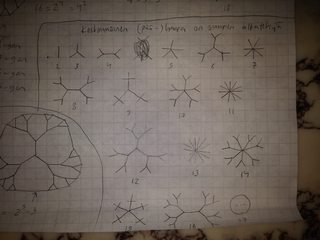
661KB, 1365x1024px
What could this sort of diagram be called?
>>
>>7658954
A tree ?
>>
File: hairline 141115.png (709KB, 1200x537px) Image search:
[Google]

709KB, 1200x537px
Is this necessarily a receded hairline? Could I have had this all the time?
It's always been pretty high but I can't really confirm from old photos because there's always hair in the way. I really want some confirmation on whether to start using minoxidil or not.
>>
>>7658772
=> direction should obvious/trivial
<= direction try contradiction IIRC.
>>
>>7658984
You ain't seen nothing yet nigga. 24 here and mine is way worse than you. Not gonna post pics because bud is on here too, but if you wanna get laid, do it now. It's all gonna go downhill from here.
>>
>>7659028
It might not be bad, but is it necessarily receded at all?
>>
>>7657154
what is [math]g(x)[/math] and [math]t[/math]?
>>
Is it theoretically possible to create a rechargeable battery that is perfectly rechargeable (discharging and recharging are fully reversible)? If it is, what practical problems are there to making one?
>>
idk how to write my research proposal
masters focused on computer vision at cambridge
wat do
>>
>>7659129
tg(x) = tan(x)
>>
We learnt some shit about the nth root of a complex number in liner algebra class, but we also learnt in calculus that writing [math]sqrt[n]{z}[/math], for example, is retarded, as there are multiple different numbers that satisfy x^n=z, so you should instead write x^n=z.
Who is right?
On a side note, aren't you annoyed by the six gorillion different notations and even names in use by people for shit in linear algebra? It's annoying as hell.
>>
File: gif.latex?%5Cdpi%7B300%7D%20%5Csqrt%5Bn%5D%7Bz%7D.gif (589B, 64x50px) Image search:
[Google]

589B, 64x50px
>>7659182
fucking jslatex
>>
>>7659138
http://gizmodo.com/scientists-solved-the-mystery-of-why-rechargeable-batte-1583247838
>>
>>7659275
(sin(2x))/2=cos(x)sin(x)
>>
Okay, I'm about to finish up Differential Equations. What books should I read as a computer engineer major? I want to get ready now for when I transfer to a university. Do I need to learn Physics now, or can I get into CE books now?
>>
what are the chances an atom in my body was once in the body of someone currently alive on the other side of the earth
>>
File: Schwarz inequality.jpg (47KB, 678x529px) Image search:
[Google]
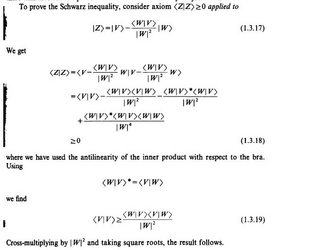
47KB, 678x529px
Could someone please help me understand the first step in 1.3.18?
Why the 3rd and 4th terms skew, is this normal multiplication followed by switching the inner product of V and W or are there other rules I'm missing?
The axioms do not cover this kind of multiplications of a bra with a ket resulting in 4 different brakets. It just doesn't make physical sense to me.
>>
>>7658984
i'm sorry for your loss
>>
>>7659524
If you're reading this on the front page:
HEEEEEEEEEEEEEEELP!
>>
>>7659524
Bras and kets are just physicist nonsense, it's just the inner product of Z with itself, and Z=V-C*W. The inner product is sesquilinear, that is it's linear in one term and conjugate linear in the other. So you get that
<z,z>=||v||^2-2|<w,v>^2|/||w||^2+|<w,v>|^2||w||^2/||w||^4
=||v||^2-|<w,v>|^2/||w||^2
=>||v||^2\geq|<w,v>|^2/||w||^2
which is the last expression. I guess you use |*| instead of ||*|| because you're working in C^n. Just use whichever you like.
>>
>>7657154
tan (x) = sin(x)/cos(x)
sec (x)= 1/cos(x)
(x sin (x) - (pi)/2)/cos (x)
You can now use L'Hopitat
>>
>>7658984
>tfw 33
>my hair is just as thick and luxurious as it was at 18.
>my dad and my uncle on my moms side both had full heads of hair well into their 60's.
feels good man
>>
>>7657154
>xtg
>sec
???
>>
>>7659594
I know that feel, I think they're some abomination trigonometric functions that you will never see again, I never saw them in the first place, I guess my professors decided not to waste our time with that useless bullshit.
>>
>>7659597
My professor rightfully hated them. We only used sin, cos and tan, which is all you need
>>
>>7659597
>I think they're some abomination trigonometric functions that you will never see again
only if you are stopping at calc 2. periodic functions achieve spectral accuracy when used with the trapezoid rule, so people shoe horn functions into a periodic form just to get that.
beware, you will see this shit again and wish you payed more attention.
>>
pic related
Can I write it like I did or how do I deal with the "bit"?
It's not really a unit, so I can simply "ignore" it, right? or what is the right way to write it?
>>
File: ss+(2015-11-14+at+11.27.40).png (7KB, 717x217px) Image search:
[Google]
7KB, 717x217px
>>7659609
I forgot the pic, god dammit
>>
>>7659613
engineers will. guaranteed.
>>
>>7659607
No, I did my master's in math without seeing any of them.
>>
>>7659614
Then again, you also need to have learnt male anatomy by heart if you're going into engineering
>>
>>7659574
Thanks for the reply.
[spoiler]I'm not sure I understand it, but at least I understand the multiplication now.[/spoiler]
>>
>>7659614
They are utterly pointless, you can write them in other trig format using the 3 normalfag trig relations.
Trig functions show up a lot in transport solutions we've never used weird shit.
>>
>>7659531
What loss? Is it receded?
>>
I have that G is a group such that for all a in G, a^2 = 1. I've shown that a is its own inverse, and now I need to show that G is abelian.
I've used proof by contradiction and assumed that (b^-1)(a^-1) = (ba)^-1 along the way (that wasn't the initial incorrect assumption). Am I justified to do this because of commutativity?
>>
Im not /sci/. Can I ask a chemistry question?
Should water, hot oil(olive oil), or isopropyl alcohol have worked as a solvent for benzoyl peroxide? Im cleaning a bottle of acne cream for other uses, but I cant get the smell out of it. I suspect its probably from one of the filler ingredients, but the active ingredient is the only thing it lists.
>>
any good goft ideas for someone really into quantum physics they have alot if books on the subject and I cant think of anything thoughtful to get them
>>
>>7660030
The second part of your post isn't very clear to me, but if you want to check whether that equality is right just see if that element on the left really behaves like the identity for ba
>>
How do I solve
[math] \int f'(x) dx[/math]
>>
Does anyone know of any good intro to logic books? Or Logic puzzle books
>>
>>7660030
This was asked a few days ago.
x y = x ( (x y) (x y) ) y = ( x x ) y x ( y y ) = y x
>>
File: 13684203607863[1].jpg (17KB, 320x240px) Image search:
[Google]
![13684203607863[1] 13684203607863[1].jpg](https://cdn.4archive.org/sci/thumb/1447/567/1447567690708s.jpg)
17KB, 320x240px
>>7654887
u used slav pic
so i can answer u like some russian proverb
Axiom of choice Escobar
>thisone garbage and otherone garbage too, both such garbage like i fuck your mother in mouth
or
>If you choose between two entities without alternative, both will be the exclusive garbage
>>
>>7660227
If it simply that, then it is pretty ambiguous. But f'(x) is equivalent to dy/dx
so you can have : dy/dx * dx = dy. The integral of dy would then just be y.
Since the integral of dx is just x.
>>
You probably get this every day....But how the fuck do you succeed at math? I'm upgrading some shitty grade 12 pre calc/linear algebra and I can only ever get B's I always seem to forget or not see tiny little details.
>>
mathematically speaking, what are physical dimensions (length, time, etc) that we use in physics?
do they form any interesting algebraic structures?
they 'look like' vectors but they seem to have additional structure
>>
how do I start it sci?
I want to learn the calculus, but how should I start?
I have finished homework, then I have my scripts, then I have my homeworks that are due.
I want to be good at it, so do I do it like this?
First, repeat the finished homeworks.
Then look at the new homework.
Then work on the script.
Am I missing anything?
I just have no real motivation until I come back from work. So I hope I get some good feedback until I come back from my part-time job
>>
File: Untitled.png (6KB, 488x165px) Image search:
[Google]
6KB, 488x165px
I just don't get it, why are they different?, does the fact that one is from the left and the other from the right changes the process in solving them or changes the result?
>>
>>7660757
Graph the function and you'll immediately see why.
>>
>>7660766
I don't know how to graph
>>
>>7660775
in case you weren't pretending to be retarded
https://www.desmos.com/calculator
>>
So if F=ma, then if you're driving a car at a constant 35mph (aka no acceleration) and you hit someone, would they get hit with a force of 0N?
>>
>>7660911
No because your car has momentum and when you hit the person this is transferred to him which is the definition of a force.
>>
How would i know how many times I have to apply l'hopital's?
>>
>>7660944
Until there no longer is an indeterminate form ?
L'Hospital's rule is shit though, an asymptotic expansion is more helpful in order to understand what's going on (incidentally, it also proves l'Hospital's rule in all possible cases)
>>
>>7660911
The car will notice a decrease in speed. Assuming no friction to the road, and no engine on, the decrease in speed is caused by a negative acceleration. The force needed to cause this negative acceleration, equals the force with which the person is hit.
In short, momentum is transfered, causing the car to go slower and the person to move faster
>>
>>7654887
Given the probability distribution of a random variable, X, is there anyway to use R to tell me about X^2?
>>
Can you add scalar fields?
>>
>>7658984
Can someone please tell me it isn't necessarily receded at all?
>>
I just started a course in astrophysical hydrodynamics and I'm a little stuck on the de Laval nozzle. My notes say that to consider the rate of variations I need to take the differential form of the Bernoulli equation.
[eqn] \frac{1}{2} u^2 + \int \frac{dp}{\rho} = constant [/eqn] goes to [eqn] udu + \frac{1}{\rho} \frac{dp}{d\rho} d\rho[/eqn]
But I don't really follow what happened. Can anyone help?
>>
>>7661196
Whoops forgot something on the last equation.
[eqn] udu + \frac{1}{\rho} \frac{dp}{d\rho} d\rho = 0[/eqn]
>>
>>7661099
Well yes of course, if you know about X then you can know about any f(X) if f is measurable.
The opposite is wrong in general, ie. knowing the distribution of some f(X) does not necessarily characterize the distribution of X.
>>
>>7654887
can I use scientific E notation (eg 1.2E+5) in written text or should I just use the standard form as in [math]1.2 * 10^{5}[/math]
>>
>>7661198
you differentiate
d(u^2)=2u du
dunno about the second. also differentiate of course, but i dont know a rigorous way
>>
>>7661198
You are considering what happens during small changes of your variables. A simple example would be:
[math]x+y=const[/math]
which implies that
[math]dx+dy=0[/math]
In your case:
[math]d(u^2)=\frac{d(u^2)}{du}du=2u du[/math]
The infinitesimal change of your second term is given by the integrand.
The constant on the RHS does not change.
>>
>>7661386
[math] d(u^2)=\frac{d(u^2)}{du} du= 2u du[/math]
>>
>>7661386
>The infinitesimal change of your second term is given by the integrand.
i forgot how this works
got a link where i can read about it?
>>
>>7661394
Imagine the integral representing the area under a curve, A. It is a sum over many small contributions to the area, dA:
[math]A=\int dA[/math]
(where I'm sloppily ignoring limits). Thus, the infinitesimal change in A is given by the integrand.
>>
>>7660757
Try thinking about a simpler case: 1/x approaching zero from the left and right.
>>
>>7661404
So,
d(integral dp(r))=dp(r)=dp/dr*dr?
doesnt it depend on the path you take? (given p(r) is not conservative)
>>
>>7661430
Yes, the information of the path taken is contained in dr, though, since you're limiting yourself to 1D then there is only 1 path available.
>>
>>7654887
What is the year of the image? And that context the fuck is this?
>>
File: ss+(2015-11-15+at+04.46.05).png (10KB, 1703x90px) Image search:
[Google]
10KB, 1703x90px
Could anyone help with this question? I feel as though I'm over thinking it.
>>
File: 1.png (46KB, 855x427px)

46KB, 855x427px
I have spent hours looking through pdfs online and can find the solution to part a on this problem, please help
>>
>>7661453
Contributions to the scale reading:
- Weight of water in scale
- Momentum flux of falling water
- Weight of scale
>>
How the heck do I take the integral of this?
Answer is 6.5
>>
>>7661469
[math]\int_0^3 x floor(x)[/math]
[math]= 0 \int_0^1 dx + 1 \int_1^2 x dx + 2 \int_2^3 x dx [/math]
>>
>>7661457
Well, the weight of the scale isn't given. I tried calculating the force due to momentum from F=p/t and then I added that to F=(mb + mw)g but that didn't work.
>>
Compare the total number of microstates, and the number of microstates in the most probable macrostate in a system of two 4-atom crystals with the number of microstates in a single 8-atom crystal. Do the same for two 8-atom crystals and a single 16-atom crystal. Assuming that the atoms can either be atom A or atom B.
So for the 8 atom crystal total microstates is 2^(8)=256, how do I work it is out for a two 4-atom system, is it 32 [2^(4)+2^(4)] or 256 [2^(4)*2^(4)]?
>>
>>7661469
lebesgue integrate that shit my african american friend
>>
>>7661481
>weight of the scale isn't given
I meant the 710g bucket
Your method sounds correct, do you agree then that the momentum contribution is:
[math]F_p = \frac{dm}{dt} v = \frac{dm}{dt} \sqrt{2gh}[/math]
>>
>>7661503
Yeah I got it now, thank you
>>
>>7661503
>>7661507
anons helping one another, 4chan is not a bad place senpai
>>
>>7661510
Aside from the scientists vs engineers meme /sci/ is actually a really good board.
>>
File: ss+(2015-11-15+at+10.21.36).png (6KB, 780x84px) Image search:
[Google]
6KB, 780x84px
Really struggling with this question tbqh. Think it needs its own thread?
>>
>>7661521
See if this helps:
[math]0.999999...=\sum_0^{\infty}\frac{0.9}{10^n}[/math]
>>
File: 12189936_1526123054345964_4987416671124831369_n.jpg (11KB, 443x449px) Image search:
[Google]

11KB, 443x449px
>>7661480
>>7661489
thank you my african american brothers!
>>
>>
>>7661543
Thank you friend, it came to me when working out the entropy since:
[math]S=k[ln(W_1)+ln(W_2)][/math]
>>
what does it mean when a variable is powered with *
>>
>>7661652
It means it's running on star power, you need to keep getting those power stars to run it otherwise it'll collapse.
>>
>>7661652
It really depends on what field or topic. Could be the complex conjugate, could be a transfer of coordinate systems. What topic is it?
>>
>>7661521
no its easy you can even prove it, if you imply that there is an epsilon bigger than zero, wich lies inbetween of 0.999.. and 1.
>>
>>7661665
modelisation in biology, when finding for isoclines
>>
please help me i'm desperate
>>
>>7661833
financial math is boring as fuck. sorry
>>
I'm great at coding but absolutely horrible at calculus. Is there any hope for me in a CompSci program at university?
>>
There are some really stupid questions in here.
>>
>>7661892
Yes. Get good at calculus.
>>
>>7661912
But how
>>
>>7661916
Internet, study, learn, read, do
>>
How do I measure absorbance without a coefficient?
>>
>>7661929
Or rather, how do I find it?
>>
File: Taylor-Swift-Confused-look-520x245.gif (103KB, 520x245px) Image search:
[Google]

103KB, 520x245px
need some help with testing for convergence......
is there a way to know what test for convergence to use just by looking at the series???
so far i get that i should use the Ratio Test when something in the numerator or denominator is to the power of n
the Root Test is when everything is to the power of n
But I don't know when I am supposed to use the
>Comparison Test
>Limit Comparison Test
>Alternating Series Test
>Integral Test (I'm thinking that this test is a cop out for when the integral is really easy to find...)
>>
How many 4 factor factorizations are there for 1,000,000
>>
Can anyone find the series for 1,3,9,30. This is discrete math class questions and part of combitorics section so I think it involves choose and factorials
>>
>>7661931
Experimentally? Shine a light through a blank sample and measure how much went through, then shine the same light through your material, then divide.
>>
>>7662226
OEIS will change your life...
https://oeis.org/search?q=1%2C3%2C9%2C30
> Central elements of the (1,2)-Pascal triangle
> number of primes <= n!
Probably one of those.
>>
Can anyone explain, in terms a 4th year physics/math undergrad would understand, why the number of gauge bosons for a particle interaction is equal to the dimension of the symmetry group of that interaction?
>>
File: 6a0120a57627b9970b012875a207da970c.jpg (62KB, 551x368px) Image search:
[Google]

62KB, 551x368px
>>7654887
what exactly are sparks?
>>
>>7662694
>what exactly are sparks?
burning metal fragments.
>>
File: bbtohajiilee22.jpg (375KB, 1280x720px) Image search:
[Google]

375KB, 1280x720px
>>7655162
fuuuuck
>>
>>7655162
>PhD in science
>in science
wtf if he did a fucking PhD he would know to name the field, nobody and I mean nobody says "I did a PhD in science", it is completely fucking meaningless
>>
>>7656942
No, if you reject the axiom of the existence of an inductive set then you reject being able to have a set closed successor operation being an object of your set theory. You can still create arbitrarily large numbers, simply keep doing [math] x \cup \{x\}[\math] to set x, again you just won't have any set closed under that operation.
>>
Any pharmacists here? How does a pharmD compare to a BA in Biology as far as difficulty and time consumption go?
I've also wondered whether the salary and job demand are memes or not, if the market gets flooded like it's supposed to then I won't bother. My issue is that I'm not extremely interested in pharmacy, my primary interests are animals, the Cold War, foreign policy, and psychological disorders, which are nightmares as far as employment and denbts go.
>>
>>7655890
bro what you need is a low-pass filter.
>>
People who have used Tipler's PHYSICS FOR SCIENTISTS AND ENGINEERS textbook, does it use any multi-variable calculus?
>>
>>7662732
If you stalk his linkedin, it says it was in chemistry
>>
I was taking my grandfather to the hospital when he pointed out a new facility several blocks down from where I live that finished construction. He described it as being used for "atomic waste".
I know very little about proper storage of radioactive waste and he's a crazy old shit who could be making stuff up off the top of his head. Could that actually be a facility for storing radioactive waste? Is it safe? It's close to residential areas but it's all mostly low income or abandoned shit.
>>
>>7662945
There's low radioactive waste and high radioactive waste.
Low waste is everyday stuff like medical products and it's not unlikely they're disposing it there.
High waste is the byproducts of nuclear energy, fuel rods etc. That stuff is extreme and if I remember correctly it's all being deposited under a monument in Carlsbad NM and will remain hazardous for 10,000 years or so.
I'd count on the former being true.
>>
To calculate power you can do force times velocity or P = F*v
This means that I can float in the air with no power at all because floating means v = 0 thus P = 0
This can't be fucking right. What do I need to calculate the true power needed?
>>
>>7662973
I looked into it and apparently back in March it was listed as an acquisition by the crazy old asshole who owns the Detroit Bridge for use as an "automotive logistics facility".
I'm really doubting it's a massive cover up for dumping any sort of waste but idk.
>>
File: may the force be with you.jpg (21KB, 500x295px) Image search:
[Google]

21KB, 500x295px
>>7662981
P in P = F*v in this context is defined as the rate of doing mechanical work. you are in fact doing no mechanical work since you're not moving in the air so the power in this context is zero.
if you're sitting still on a rocket engine it still doesn't do any mechanical work, it has no propulsive power output
https://en.wikipedia.org/wiki/Thrust#Thrust_to_propulsive_power
but you would still need thrust (force) that counters the gravitational force in the opposite direction of gravity. now how much input power you would need to get that thrust, as in what rate of energy would a perfect rocket consume... idunnolol
>>
If a grad school asks for a statement of purpose and a personal statement, should I leave all things not immediately about past classes, research, and career goals out of the statement of purpose? Should I be doing this anyways?
Fuck applying for things.
>>
Is the sum of quasi-linear function and convex one, quasiconvex function?
>>
Who is paying for the invasion of Europe?
>>
File: Greater_israel.jpg (263KB, 461x483px)

263KB, 461x483px
>>7663196
the zionist us-israeli alliance
it's a long term plan
2065:
>the middle east is now greater israel due to little to no resistance to expansion in the past 50 years, given the instability of the region and declining populace
>europe is completely fucked and the us decides some "liberation" is due
>>
Hey /sci/
I am trying to solve an boolian equation namely:
[code]f1(x, y, z) := (¬x Ʌ y Ʌ z) V (x Ʌ ¬y Ʌ ¬z) V (x Ʌ ¬y Ʌ z) V (x Ʌ y Ʌ z)[/code]
would this be an ok start? It looks off to me.
[code]f1(x, y, z) := (¬x Ʌ y Ʌ z) V (x Ʌ ¬y Ʌ ¬z) V (x Ʌ ¬y Ʌ z) V (x Ʌ y Ʌ z)
f1(x, y, z) := ¬(¬x Ʌ y Ʌ z) V ¬(x Ʌ ¬y Ʌ ¬z) V ¬(x Ʌ ¬y Ʌ z) V ¬(x Ʌ y Ʌ z) |de morgan
f1(x, y, z) := x V ¬y V ¬z V ¬x V y V z V ¬x ¬y V ¬z V ¬x V ¬y V ¬z |de morgan[/code]
>>
>>7663743
If this is wrong ( I have the strong believe it is)
what would be a good start?
Which boolean rules do I have to apply?
Sorry for the bump forgot to montion that in the first post
>>
File: Functions.jpg (105KB, 860x1024px)

105KB, 860x1024px
>>7656083
>>
>>7663743
stop using shitty notation
F = (x'yz) + (xy'z') + (xy'z) + (xyz)
F = [ (xy'z') + (xy'z)] + [ (xyz) + (x'yz) ]
F= xy' + yz
QED
>>
File: 1433222712923.png (13KB, 418x359px) Image search:
[Google]

13KB, 418x359px
>be me
>take a short-term introductory class to c++
>few weeks later
>all the people in the class are now friends with each other
>haven't talked to a single person
should I be worried? I'm 27 and no friends.
>>
>>7664108
nah
you have plenty of other opportunities to make friends.
join a club. take up acting lessons. try out a sport.
>>
I feel like an idiot but how can I use greens theorem on a conservative vector field? I'm given a function in x and y, the question asks me to check line integral using any means, than asks me to use greens theorem to get the same value. The thing is Qx and Py cancel out no matter what as Qx=Py. What am I doing wrong here?
>>
File: Screenshot_14.png (38KB, 621x423px)

38KB, 621x423px
So, i am trying to find the real part of a complex number and then stumbled across this step is needed. i probably just confuse myself too much and don't really get how to get from the left side to the right one.
Can someone please explain (see picture).
>>
>>7664398
[math]i^2 = -1[/math]
[math]-i^2 = 1[/math]
>>
Why does the order of multiplication and division not always matter? Is there a way to predict when it wont matter?
>>
>>7664401
>>7664402
Yes, thanks for the quick answers. Should've known that.
>>
>>7664398
That picture looks pretty good. What software did you use to make it?
>>
>>7664439
I use OneNote on a Surface Pro 2, I'm looking for a similar software for linux though.
>>
>>7664447
Wine maybe ?
>>
How do I proof by induction?
HOw do I proof recursively?
How do I do recursion?
Is there any way doing it?
>>
Okay, I need to take Physics I this spring to have a chance of transferring to Pomona, SDSU, Long Beach, or CPSLO. On assist, there's two different CCs that I go to where one CC only needs Physics I & II while the other CC needs Physics I, II, and III. The CC that only needs two Physics had a terrible professor while the one with three have great professors. What should I do?
>>
What is the error in y when:
[math]y=mx+c[/math]
when m x and c have an error?
>>
How can an integral domain D have a nonzero characteristic if D has no nonzero divisors. I know prime numbers work, but pa=0 for all a in D seems contradictory to me. What am I missing?
>>
>>7665192
to further explain my question: Since D is an integral domain, pa=0 implies that either p or a is equal to zero, yet this goes against the definition of the characteristic p prime in D.
>>
>>7665192
>>7665200
I struggled with the same concept. Here's the deal. When we write pa = 0, we're not talking about multiplying two elements of our ring. We're adding a with itself p times.
For example, the integers mod 7 are a ring (specifically a field but that's beside the point) which is both an integral domain and has characteristic 7. There is no element '7' in this ring (as 7 = 0 mod 7), yet we can talk about 7*5, just because we treat it as 5 + 5 + .. + 5
>>
>>7659594
>not knowing about the secant function
I'll give you xtg though, even google doesn't bring anything up about that abomination
>>
>>7665215
hm. ok thanks
>>
What length of time is contained in an image? Can it be quantified or is it infinitely small?
>>
>>7665349
By image, do you mean a photograph?
>>
File: 1.png (99KB, 900x300px)
99KB, 900x300px
What are the side lengths of body and face centered cubic structures relative to the radius of one of it's atoms.
bonus points for equations
tried to find it yesterday and today and too tired to find a difference between the two.
>>
>>7665373
Yeah
>>
>>7665399
Do you understand the process by which a camera creates an image? It must collect light so it must be operating over some finite length of time.
>>
>>7665406
Yeah I understand how it works that's why I'm confused...I know that the amount of light isn't infinite I was just wondering is there a unit of time for a photo? I'm struggling to word this but I hope you understand
>>
if i have a laser passing through first 10cm of air air, then a sample solution, then the thin container of that solution, can i neglect the effect of absorbption through the air and the container's wall?
>>
about the series (-1)^n from n=1 to infinity converging to 1/2...
what the fuck?
>>
>>7665421
Sorry, when I said "finite" I was supposed to say "non-zero". I don't know exactly, but my best bet is that the characteristic timescale is the shutter time as this determines how long the film (in the old days) is exposed for.
>>
>>7665434
So is it just 1/speed of light? If the speed of light is the speed limit then I guess that's it? but it doesn't seem right..thanks though
>>
>>7665428
I don't think that is true.
this series is
{1, 0, 1, 0, 1, 0,...}
The definition of a(n) ---> b is that for some e>0 there exists an N such that for all n>N, |a(n)-b| < e.
that is clearly not true for this series, which since I can choose 0<e<1/2 and you won't be able to give me a term in the series which satisfies those parameters.
>>
>>7665440
Not that I think camera shutters work at light speed by the way...I just realized how stupid that sounded
>>
>>7664108
Just talk to people, it's not that hard.
>>
>>7665440
No, that's not what I was saying. Also, 1/c does not have dimensions of time.
The shutter takes some amount of time to open and close, this is the time I am suggesting as the "timescale" of your photograph.
>>
>>7665441
I think I once saw a way, similar to Euler's old paradoxical nonsense where 1 - 2 + 3 - 4 .... = 1/4 that you can arrive at that answer, but it requires using nontraditional and somewhat nonsensical definitions (which are still somewhat mathematically interesting).
A little simple research gets me here:
https://en.wikipedia.org/wiki/Grandi%27s_series
Under modern definitions of convergence it's an example of "how not to prove convergence."
>>
>>7665451
But that's not how a camera works is it? I thought the shutter opens and then when its open the light hits the sensor.
how fast the shutter opens shouldn't change how fast the light hits it, it might mean the light hits different parts of the sensor at different times I guess but that just changes my question to how much time is contained in the first photon of light that hits the sensor...
And I know a photon is a unit of light I'm just really confused
>>
>>7665465
The amount of shutter time determines exposure. In other words "how much" light has hit it. I guess you could quantify this as a length of time, but in order to do that you need to presume a baseline luminosity (i.e. the amount of light being given off per second). Because you can get the same exposure from an extremely bright room and a small shutter duration as you can from a dim room and a large shutter duration.
>>
How many watts of energy would I need for a directed-energy weapon to punch a hole in 1cm of wood in exactly one second. Imagine the wood is polished wood used in desks, chairs, doors, etc. I just want to know the power of penetration of laser weapons compared to regular bullets.
>>
>>7665472
But if this guy wants to know "the length of time contained in an image" the shutter time is all you need to know. Using the same shutter, a photo of a bright light bulb and a photo of the night sky will have different amounts of exposure, but will still "contain the same amounts of time".
>>
>>7665479
Oh, yeah, sorry. I thought the question was more along the lines of "if you had an image with no knowledge of how it was made, could you read the time from it" (in which case the answer is "only if you make assumptions").
But yes, you're right. Shutter time is, by definition, the length of time that the picture was taken over.
>>
>>7665483
Well you're kinda right but what I really wanna know is if you take shutter speed out of the equation then how much time is contained in the picture?
Like hypothetically a box with a vaccum inside a camera sensor on one side an object suspended in the middle and in complete darkness, opposite the sensor a light source?
>>
>>7665428
Well the partial sums converge to 1/2 on average (ie., writing [math]S_n = \sum_{k=0}^n (-1)^k[/math], we have [math]\frac{1}{n+1}\sum_{k=0}^n S_k \to \frac{1}{2}[/math]) so, if you weaken the meaning of convergence to mean "the partial sums converge on average", then yes.
Note that this does not conflict with the usual definition since you can prove (Cesaro's theorem) that if a sequence converges, then it converges on average to its limit. Therefore, if a series converges in the usual sense, the two definitions coincide.
>>
Is the formula for a linear function [math]f(x)=f(a)*(x-b/a-b)+f(b)*x-a/b-a[/math], [math]f(x)=f(b)-f(a)/b-a*x+bf(a)-af(b)/b-a[/math], or [math]f(x)=mx+c? Or do all three formulae achieve the same value?
>>
>>7658273
I still don't feel any better, and my abs feel tight and my face hurts. What do I do at this point?
>>
File: 1417475196500.png (16KB, 174x231px) Image search:
[Google]

16KB, 174x231px
Does anybody have any tips for converting from cartesian to spherical to cylindrical coordinates?
I have an exam tomorrow, and I've been cracking my head against it for a couple of days but I just can't get it.
And it isn't that I don't get spherical coordinates. I totally do.
The thing is that they give us a nonconventional shape in cylindrical usually and tell us to convert it to the other systems and in different orders. Honestly, I'm just struggling to wrap my brain around it (hell I struggle drawing the rz plane) and I'm wondering if anybody had any tips/videos on it.
>>
>>7655890
If you don't like what you're seeing with all of the Fourier stuff that's been posted (the Fourier stuff is probably the way to go though, desu), you can try a simple interpolation scheme. Probably won't be as accurate, but you can probably get something decent with cubic splines
>>
A question about CS on binary and hex... I just learned the basis of it but there is this thing I don't understrand, first I'd like if you could tell me whether my assumption of this is wrong or right:
[code]WORD (BYTE + BYTE):
[1(a) + x(b)]
[1(a) + 256(b)]
x = 16^2
e.g:
a = 6C = 108
b = 1A = 26
6C + 1A = [1(6C) + 256(1A)] = [1(108) + 256(26)] = 6764[/code]
Is this a correct way to describe a WORD? I used an hex editor to verify the results and they seem to match, but I don't know if this is the actual method or just a coincidence.
My other doubt is about the 16^2 part, why is it 16^2 in the first place?
That aside, here is another thing:
[code]DWORD (BYTE + BYTE + BYTE + BYTE):
1(a) + x(b) + y(c) + xy(d)
1(a) + 256(b) + 65536(c) + 16777216(d)
y = x^2
e.g:
a, b, c, d = 01 = 1
1(1) + 256(1) + 65536(1) + 16777216(1) = 16843009[/code]
I was trying to give a logic to the values of DWORD's and this formula seems to be working, but it still leaves me a bit worried, is it yet another coincidence?
While screwing with the hex editor I found other two values called "32 bit IEEE single" and
"64 bit IEEE double" but doesn't matter whatever I tried, I couldn't make sense of these two values so I gave up, I forgot to google it so I'll give it a google later but if you have any tips, please let me know.
One last thing, I noticed strange numbers coming from WORD's when using hex values close to FF.
This is what a 257 bit WORD gives me:
[code]01 as shortint: 1
01 01 as word: 257
01 01 as integer: 257
01 01 01 01 as longint: 16843009[/code]
It seems to match my "theory" from before, but here is the problem I mentioned about values close to FF:
[code]FF as shortint: -1
FF FF as word: 65535
FF FF as integer: -1
FF FF FF FF as longint: -1[/code]
I'm out of ideas, why is the hex value FF FF returning a negative integer and longint? what kind of calculation did the CPU run to return -1 instead of 65535?
>>
>>7665751 (cont)
>FF as shortint: -1
And about this part, how can it be -1 when the value of FF is definitely 256? could it be a bug in the editor I was using?
>>
>>7665000
Just go to the closest CC. Use mit videos to learn
>>
>>7665686
if you're that worried, go see a fucking doctor
>>
>>7664461
Not really tried it yet, my experience with wine was Good and also awful at times but in general i try to avoid it and find an alternative program
>>
I'm trying to dimension a plate, that can withstand a rod pressing 180 kg on it. I don't have much experience with this, I'm assuming I can consider it as a beam that's fixed at both ends, and that the load is uniformly distributed since it's pressing up against it? What I'm unsure of is calculating the total load, is it 180 times the length of the plate?
>>
File: 3426978_1386708925551.24res_500_278.jpg (42KB, 500x278px) Image search:
[Google]

42KB, 500x278px
>>7665751
no one?
>>
Is there a simple explanation to understanding gradients for multivariable functions? I cant seem to understand why the direction of the gradient is the highest change in the function value.
>>
>>7666417
well you take the change of the function in x,y,z. if the change in x is the highest your vector (df/dx, df/dy, df/dz) has the highest value in his e_x component, so its roughly pointing in that direction.
maybe I understood you wrong? Seems obvious
>>
>>7654917
GJK
>>
>>7666421
Yeah I got that, it's just it confuses me how to visualize the direction it is going
>>
>>7663209
this
an actual jew admits it at 18:54:
https://www.youtube.com/watch?v=44vzMNG2fZc
>>
File: 2015-11-18-151504_695x625_scrot.png (41KB, 695x625px) Image search:
[Google]
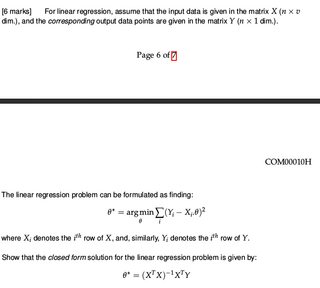
41KB, 695x625px
>>7654887
Anyone kind enough to help me solve this? I don't understand anything.
It's not homework per se, it's just a previous year exam paper
>>
>>7666457
partial differentiate theta* with respect to theta=0
solve for theta
>>
>>7666471
How do you know though?
>>
>>7666472
german wikipedia
>>
Do you include the classes into your 8h workload?
Say, you have math classes, the professor shitposts his stuff on his whiteboard, you write it all down.
Does this count as work for a student?
I am trying to find out, what time management and priorities mean to me.
>>
>>7666516
>measuring workload
i just work until i feel confident about the material so i work all the time basically
>tfw will never catch up
>>
>>7666526
Me, too.
I procrastinated too much.
I have found most of my cues and try to learn new ones.
But it won't do good if I just study, I need to find something to cool myself off, without escapism....
>>
How do I become very good at probability and statistics in like a week?
>>
I get it that SD measures the spread by calculating MSE with the mean of the sample/population, but what does it mean when people say "2 standard deviations" or any other number of SDs?
>>
Does anyone here have knowledge of extreme value theory in statistics or engineering?
I've recently learned that the maximum of a large number of independent, identically distributed normal random variables is a approximately distributed like the Gumbel distribution.
But I have not been able to find anywhere how to derive the parameters of that gumbel distribution from the mean and variance of the normal random variables whose maximum is being taken.
e.g.
If Xi are independent distributed Normal(mu , sigma^2) then max{X1, X2, X3, ... , X100000} is distributed Gumbel
But what are the parameters of that gumbel in terms of mu and sigma^2 ?
where mu is the mean of the i.i.d. normal distributions Xi and sigma^2 is their variance
>>
How does multiplying Levi-Civita's work?
I have
1.) F_1 = I_1 integral over L_1 sum_ijk epsilon_ijk e_i a^j b^k
2.) B(r) = mu_0 I_2 / 4pi * integral over L_2 sum_ijk epsilon_ijk e_i dl_2^j (r^2 - l_2^k) / |r - l_2|^3
3.) F_1 (by I_2) = I_1 integral over L_1 dl_1 cross B_2
substituting B from above and looking at ith component
4.) F_1i = I_1 I_2 mu_0 / 4pi integral over L_1 integral over L_2 (sum_jk epsilon_jk dl_1^j) (sum_jk epsilon_jk dl_2^j (r^k - l_2^k))
how do you simplify it further?
I even tried with regular vector calculus and expanding it by the product rules of cross product but got something that didn't seem to simplify.
>>
>>
>>7666691
latex or a picture would help a lot in your case.
remember that epsilon_ijk=-epsilon_ikj
>>
File: 2015-11-18-183011_427x178_scrot.png (9KB, 427x178px) Image search:
[Google]
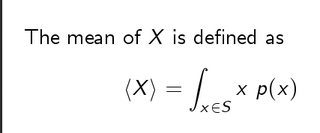
9KB, 427x178px
Can someone please explain me this formula? Like, what's going on? Why is there an integral used? X is a continuous variable X = {x, p(x)}
Is it taking the area under the probability function? Why is that the mean?
>>
>>7666782
p(x) is a probability density function, since X is continuus and not discete.
its basically the same as discrete, but you swap the sum for an integral and p(x) is a density instead of discrete values for each x
>>
>>7666764
Yea it would definitely.
[math]
F_1 = I_1 \int_{L_1} \sum_{ijk} \epsilon_{ijk} e_i a^j b^k \\
\\
B(r) = \frac{\mu_0 I_2 }{4 \pi} \int_L_2 \sum_{ijk} \epsilon_{ijk} e_i dl_2^j (r^2 - l_2^k) / |r - l_2|^3
\\
F_{1i} = \frac{I_1 I_2 \mu_0} {4 \pi} \int_L_1 \int_L_2 (\sum_{jk} \epsilon_{jk} dl_1^j) (\sum_{jk} \epsilon_{jk} dl_2^j (r^k - l_2^k)) / |r-l_2|^3
[/math]
please work
>>
>>7666782
In the discrete case, you do a sum of value x * probability that x occurs. That gets you a mean value.
Do you understand it in the discrete case?
If X is continuous, then a sum becomes an integral (an integral is basically a 'continuous sum', if you recall ffrom calculus), and your probability comes from some distribution.
>Is it taking the area under the probability function?
No, it is also multiplying by x.
>>
>>7666795
Thanks, but do you know how does the value look graphically? Like what's the intuition for this? Why is this the mean?
>>
>>7666801
Alright I guess I sort of get it or I should... Maybe I'll read a bit more about it and the relation between summation and integrals
>>
given is a particle decay X->muon+muon+antimuon+antimuon
fourmomentum of a and b are given
mass of X is sqrt((sum energy)^2+(sum momentum)^2)
now my question is, if i calculate the mass for one muon sqrt(E^2-p1^2-p2^2-p3^2) the mass should be equal to the mass given on wikipedia, shouldnt it?
my solution is 2 times bigger, any idea why?
is it because only 3 decimal points are given?
>>
>>7665057
https://en.wikipedia.org/wiki/Propagation_of_uncertainty
Either use the derivatives or just the table at the bottom of the page.
>>
>>7666907
why did my stats class not covered this? any good online course on stats that covers this and potentially other topics that i missed?
>>
What's the difference between an integral and an anti-derivative?
>>
>>7667020
anti-derivative of a function f is used to refer specifically to the function F which when differentiated will give you f. It is also called the indefinite integral
however the integral of a function f might refer to the value of the integral evaluated between an upper and lower bound, which is called the definite integral. ore refer to the anti-derivative.
>>
Question about linear algebra. Also testing LaTeX.
Let's say I have a subspace [math]W=\{w_1, w_2, w_3, w_4, w_5\}[/math] of [math]R^5[/math]. Then I find a basis [math]S=\{u_1, u_2, u_3\}[/math] of [math]W[/math], so
[math]dim(W)=3[/math]
What does that mean, geometrically? That [math]W[/math] is a cube? But isn't every [math]w_i[/math] a 5-tuple and therefore a vector in 5 dimensions?
>>
>>7667324
but... how do you do the indefinite integral in one point if you're saying only the definite one has an interval? wouldn't it be 0 cause the area under a point is 0?
>>
>>7667346
the indefinite integral gives you a function plus a constant c
e.g. f(x) = x
F(x) = 1/2 x^2 + c
you can then pass the function an input to get an output.
this will not give you the area under that point alone, it will give you the area under the function between 0 and x
e.g.
F(5) = 1/2 *5^2 = 12.5 = the area under the graph of y= f(x) between 0 and 5.
>>
>>7666691
So I did that somewhat wrong. You have to have different indices for he two epsilon. And from wikipedia, when you multiply them you get Kronecker delta (D), which are even just as annoying.
4.) F_k = mu I_1 I_2 / 4pi integral L_1 integral L_2 ( dl_i | r - l_2 | ) / ( |r - l_2)|^3) (D_il D_jm - D_im D_il)
how do you simplify those deltas and how do I get rid of that r?
>>
>>7666746
I'm back, by the way here is a screenshot directly from the editor: >>>/g/51404687
If you have any links that could help me understand this, anything can help.
>>
[math] p ~ \in ~ \C ~ is ~ a ~ polynomial. ~ Is ~ p(z) ~ divisible ~(without ~ rest) ~ by ~ z-z_0 , ~ then ~ z_0 ~ is ~ a ~ zero ~ point. [/math]
I assume this statement is true but i am not entirely sure, when you do the polynomial devision do you have to use [math]z-z_0 ~ or ~ (z-z_0)z[/math] ?
>>
>>7668288
with \C i ment [math]\mathbb{C}[/math]
Thread posts: 327
Thread images: 41
Thread images: 41

